Liebherr LR 13000 - Mammoet
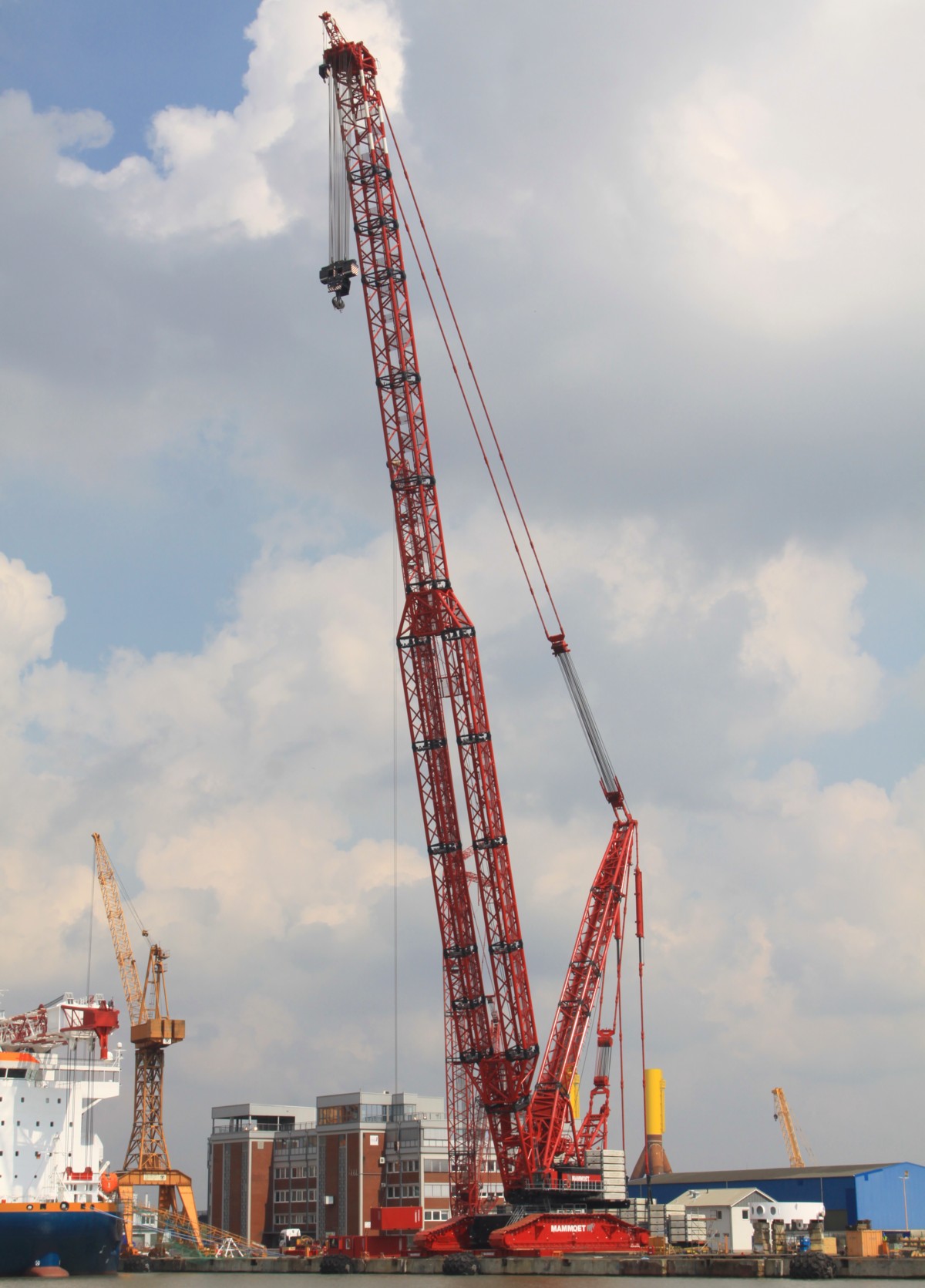
The biggest Liebherr crawler crane ever built is this Liebherr LR 13000 with a max. lifting capacity of 3,000 tonnes on a 12 meter radius. The first unit was sold to Mammoet from Schiedam (NL), the second unit to a Chinese company the third to ESEASA from Mexico and the fourth unit isn't sold until today.
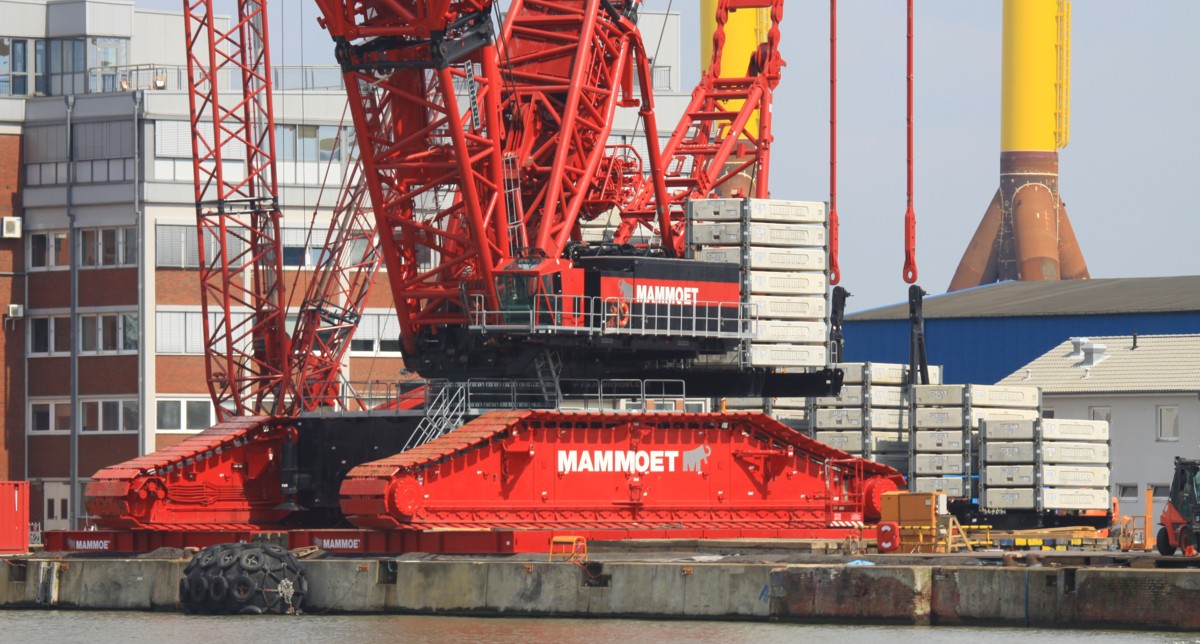
The second job of Mammoet's crane was in Bremerhaven (DE), four heavy lifts on a shipyard should be done by the crane. It was the first time that this crane is used with the P-boom (double boom), on his first job the crane was used with main boom and luffing jib.
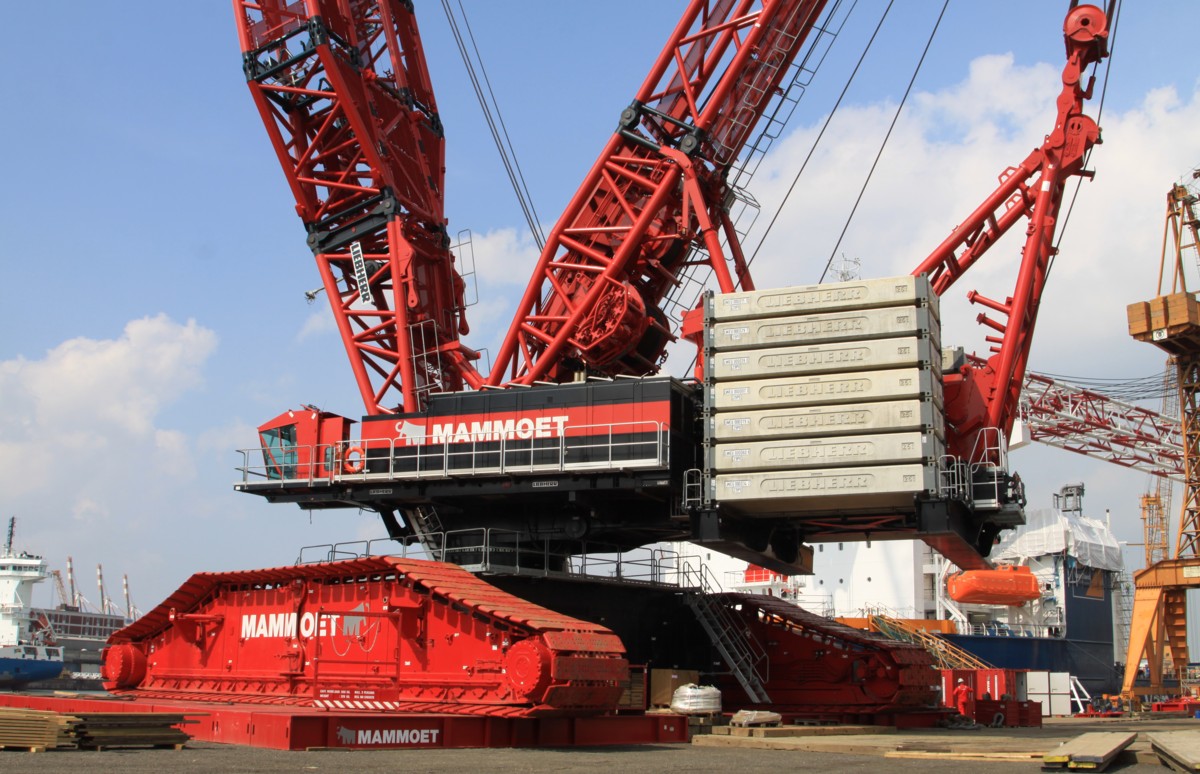
Unfortunately is in many cases some material missing to show the huge dimensions of the crane. The slewing ring has a 4.5 meter diameter and was built by Liebherr Components in Biberach (DE). Only the slewing ring with drives has a weight of 36 tonnes.
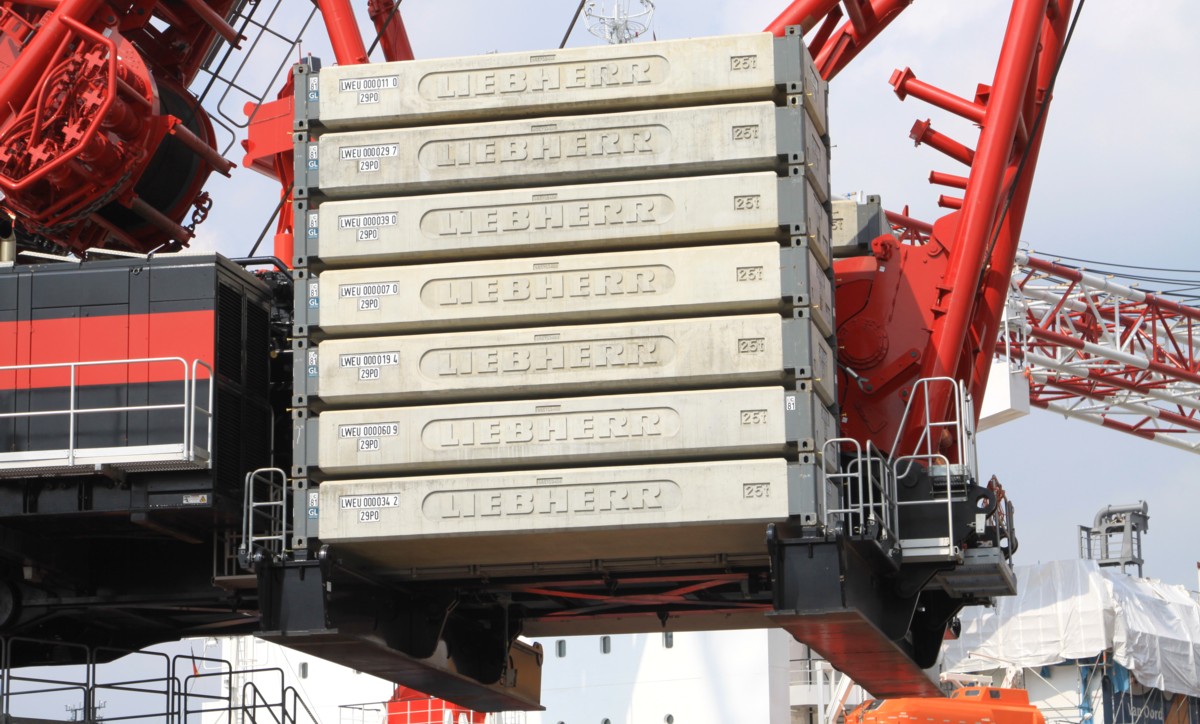
The counterweight slabs are mainly made out of concrete and for easy transport they have a 20' container dimension and a 25 tonne mass. The full counterweight weights 400 tonnes with the two beams, each 25 tonnes, included. The tailswing is 16.4 meters.
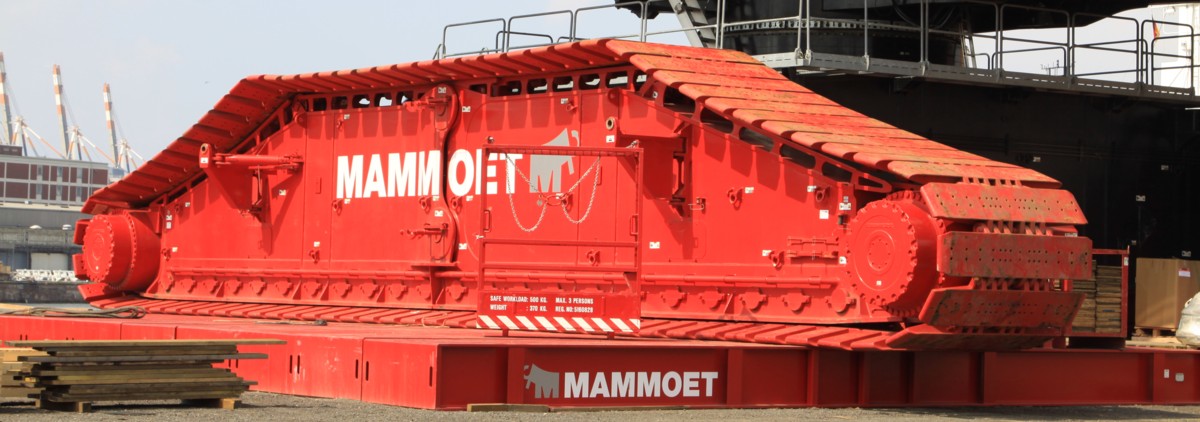
One track is 21.9 meters long, 2.4 meters wide and 3.84 meters high. For the transport are the track beams and the chains splitted into 6 pieces. An assembled track has a weight of 213 tonnes. The undercarriage is 16.4 meters wide.
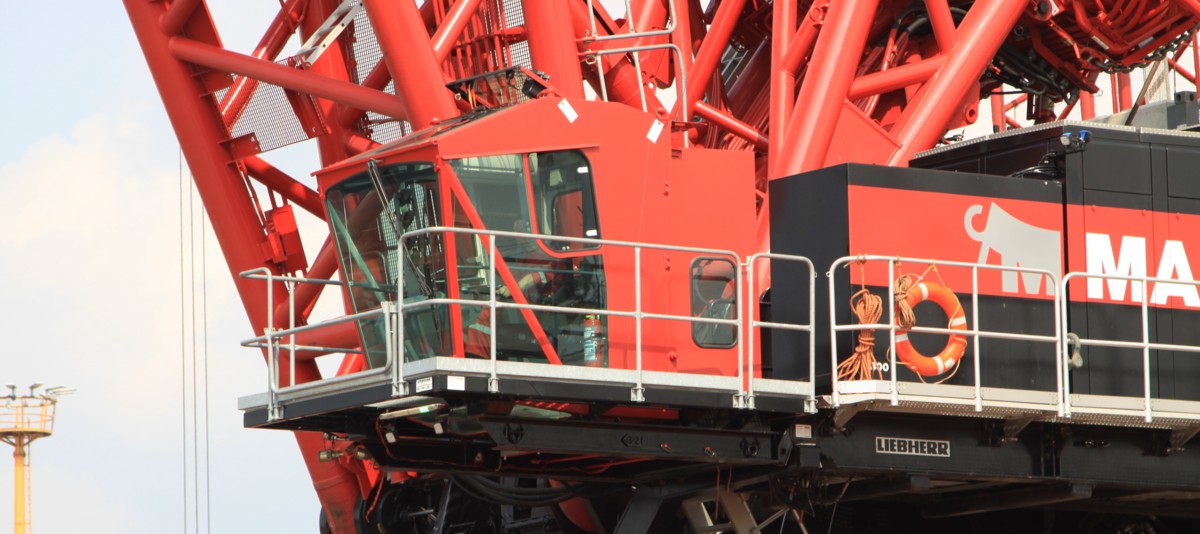
The big cab is also used for the LR 11350 and several harbour cranes of Liebherr.
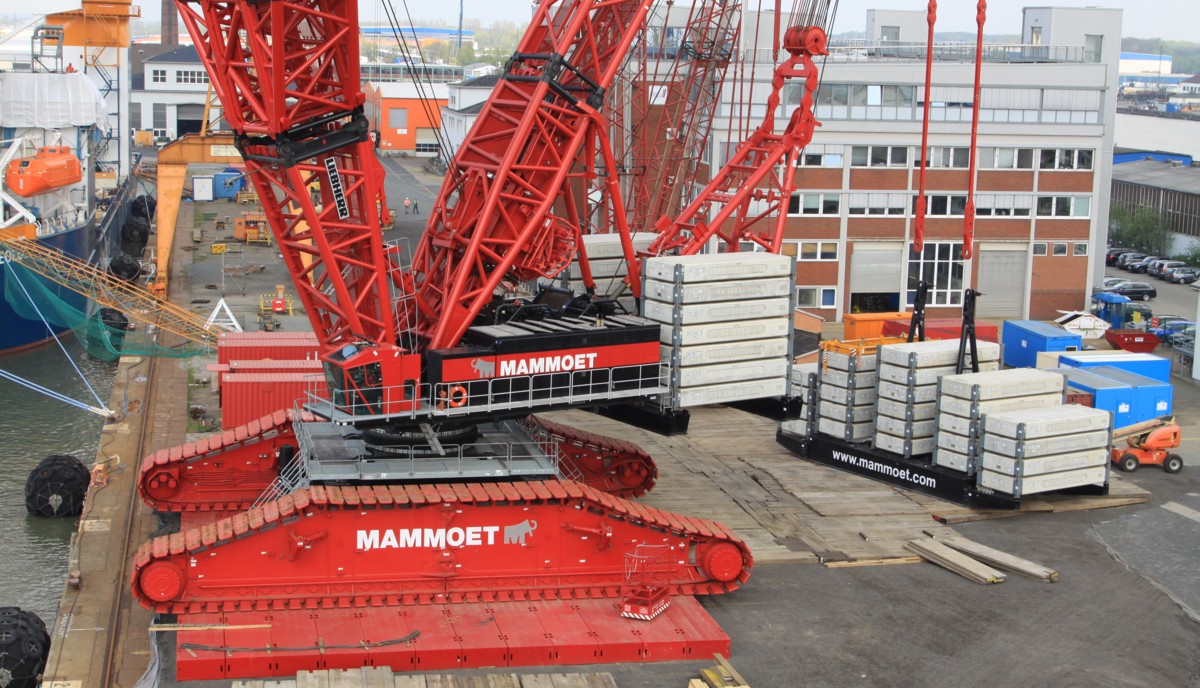
Here some preparations for the first lift are done, the derrick counterweight isn't attached. Proper to see from this point is that the drives on the crawlers aren't touching the covers because they aren't part of the supporting construction.
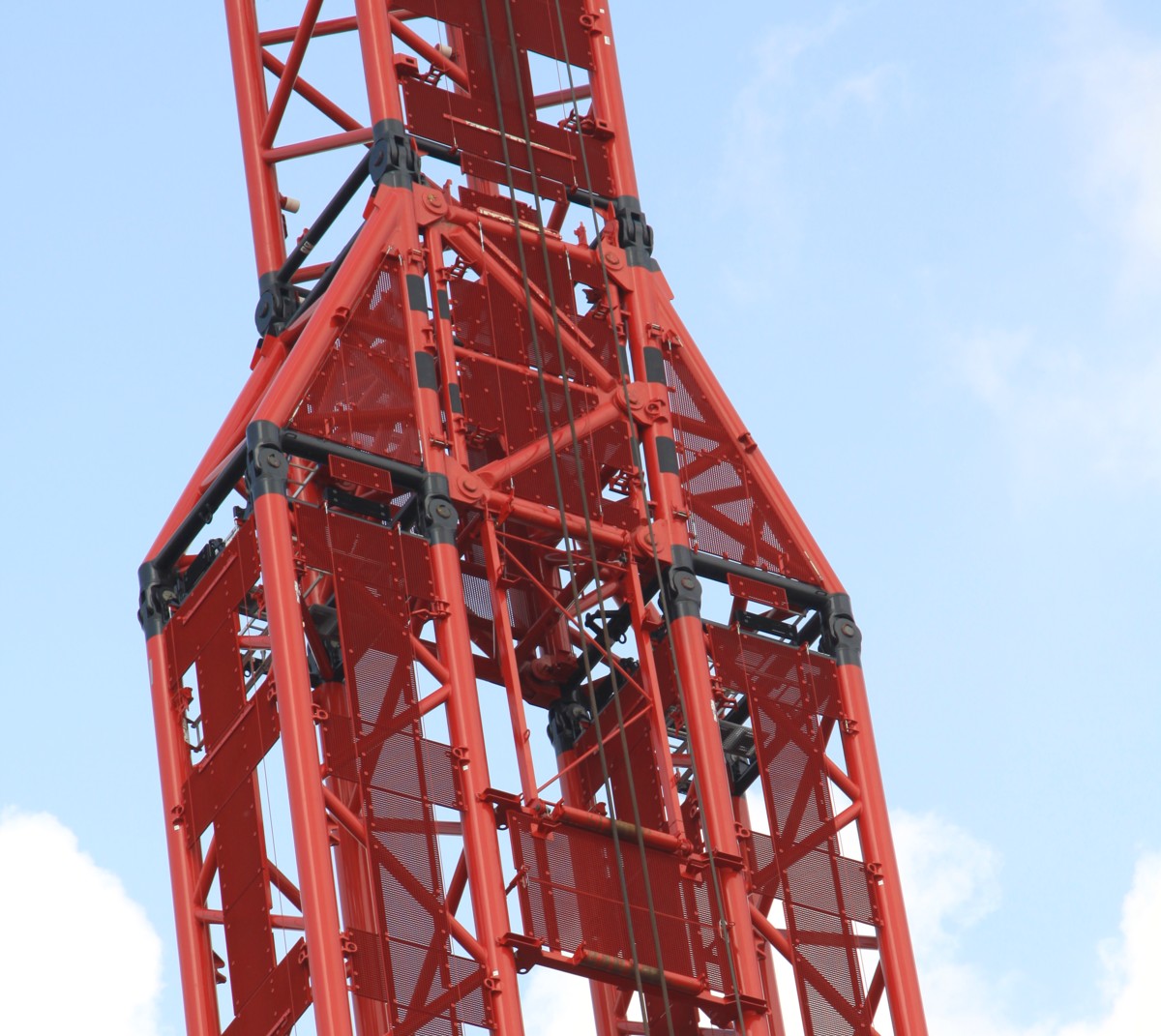
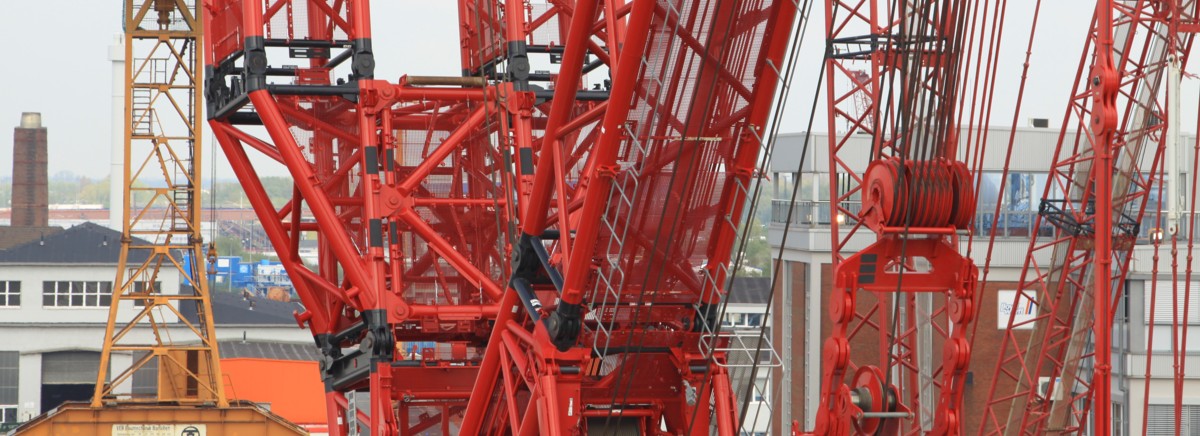
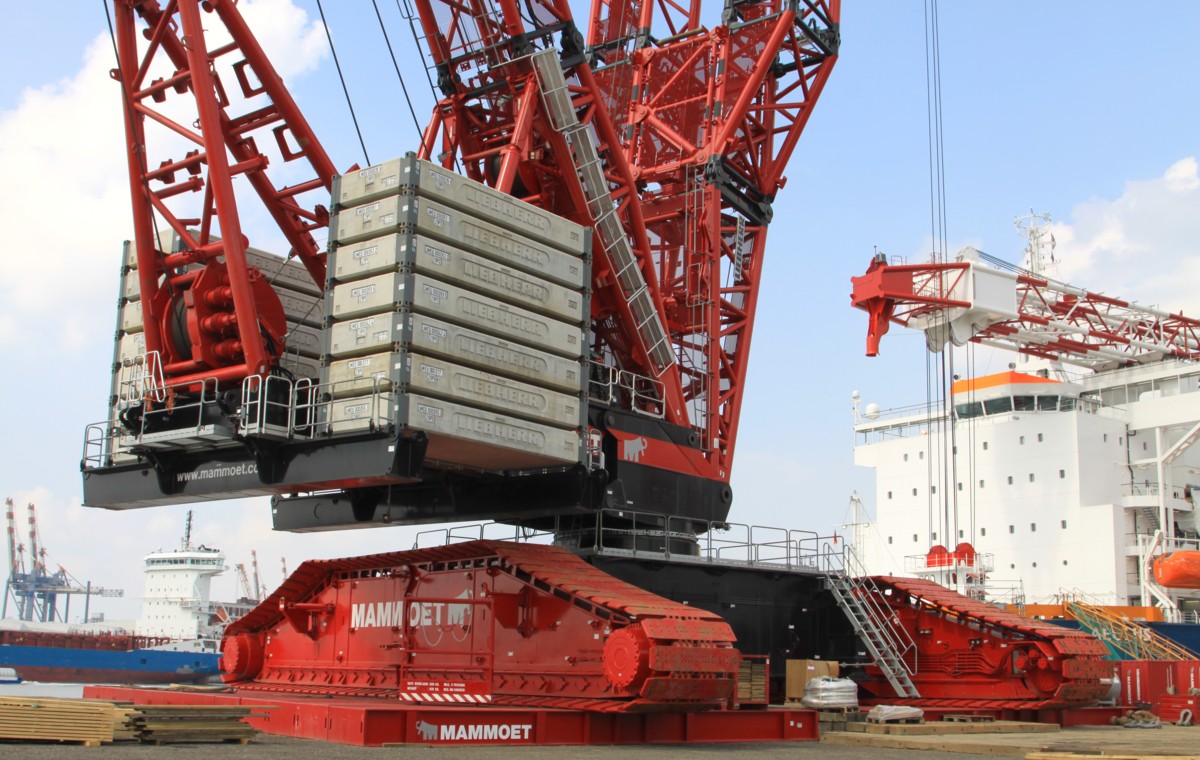
The undercarriage of the crane is build out of a centre section (58 tonnes) with two cross beams (also 58 tonnes, each). The superstructure is made out of a front- and back piece of resp. 68 and 55 tonnes, the cab (3 tonnes), the machine room (with 2x Liebherr V8 680 hp diesel engine) (33 tonnes), two hoist winches (line pull 61.7 tonnes) each 53 tonnes, A-frame (71 tonnes) and the counterweight 400 tonnes. For the crane assembly 12 days were required.
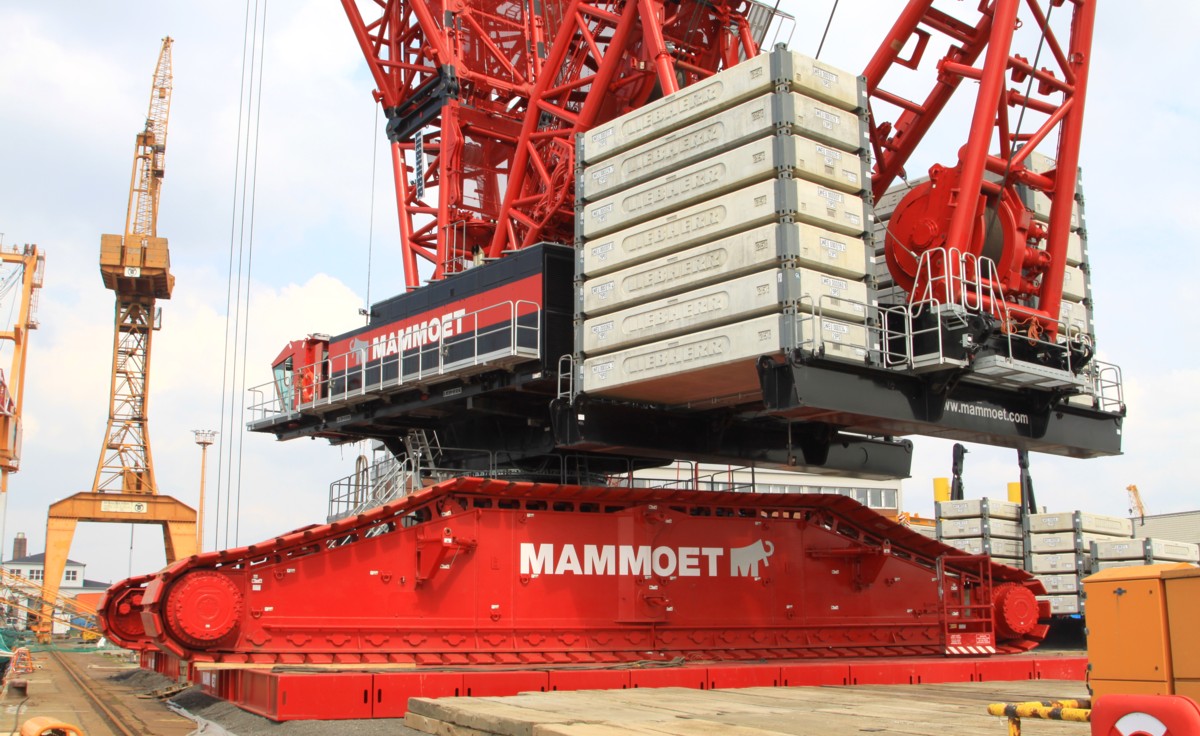
This crane has as only Liebherr LR-crane an A-frame because this crane is always used with derrick boom.
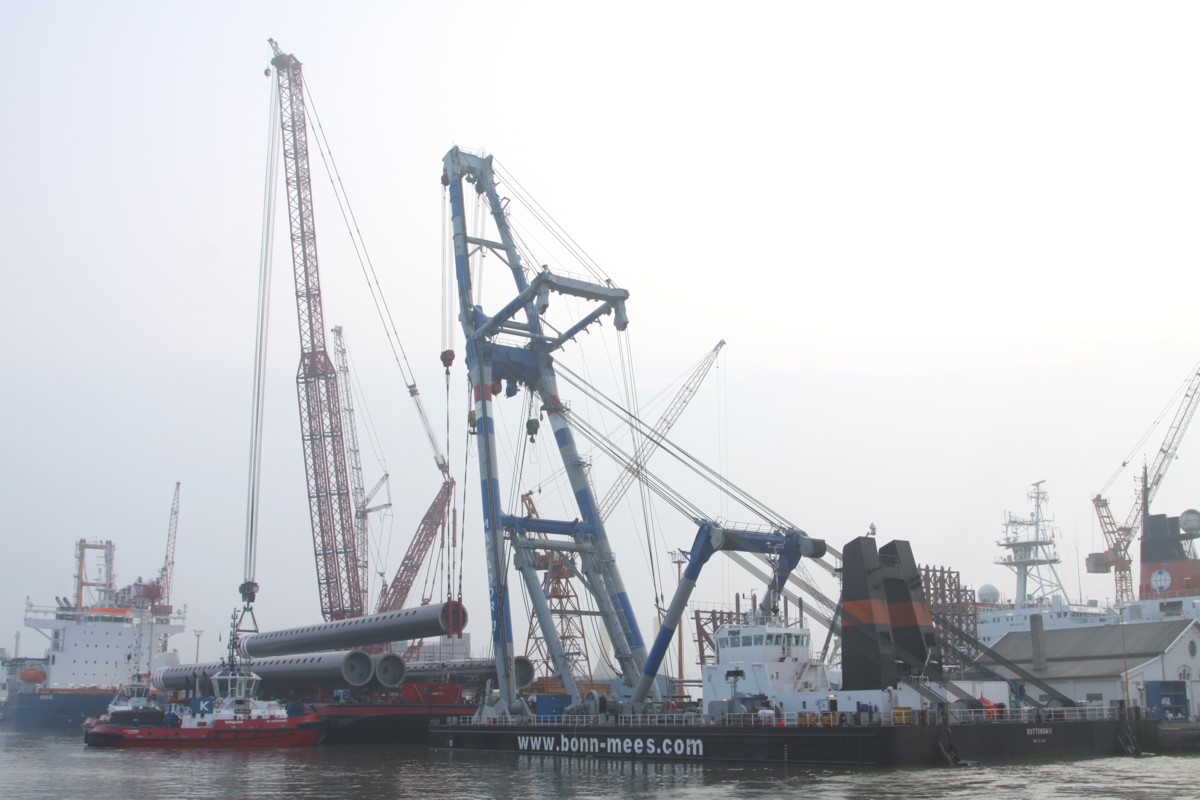
The next day it was time for some action. The jib is the lifting and assembly of four large jack-up legs for a new crane vessel. The tailing crane is the floating crane Matador 3 from Dordrecht (NL), this is a 1,800 tonne floating crane.
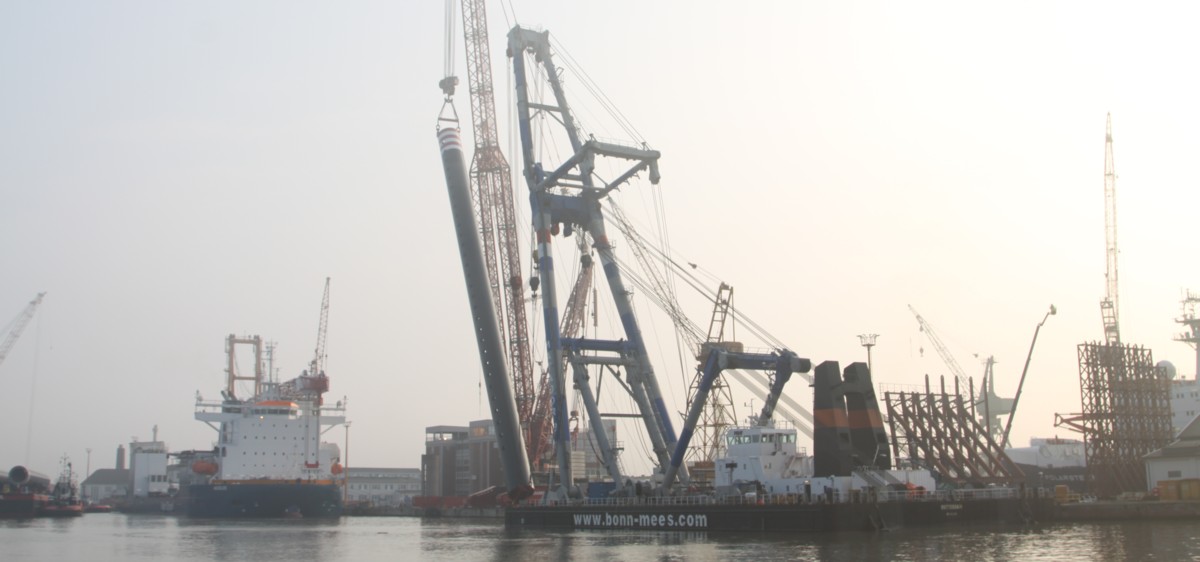
The jack-up legs have mass of around 940 tonnes. With the hook and fastening equipment of 65 tonnes the LR 13000 will lift more than 1,000 tonnes in some moments!
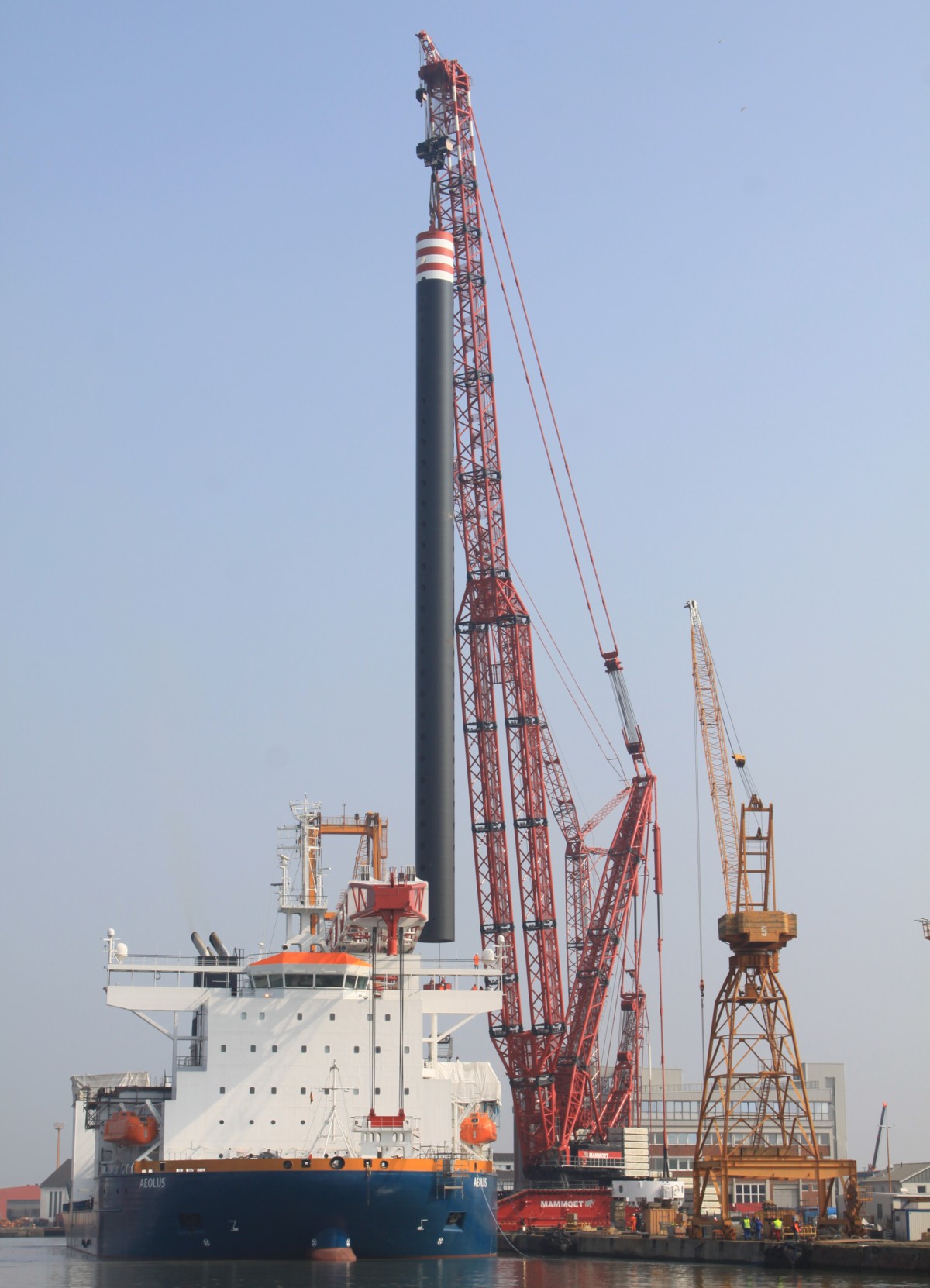
The length of the jack-up legs is around 87 meters, the LR 13000 is fitted with a 130 meter main boom, the derrick boom is 54 meters long.
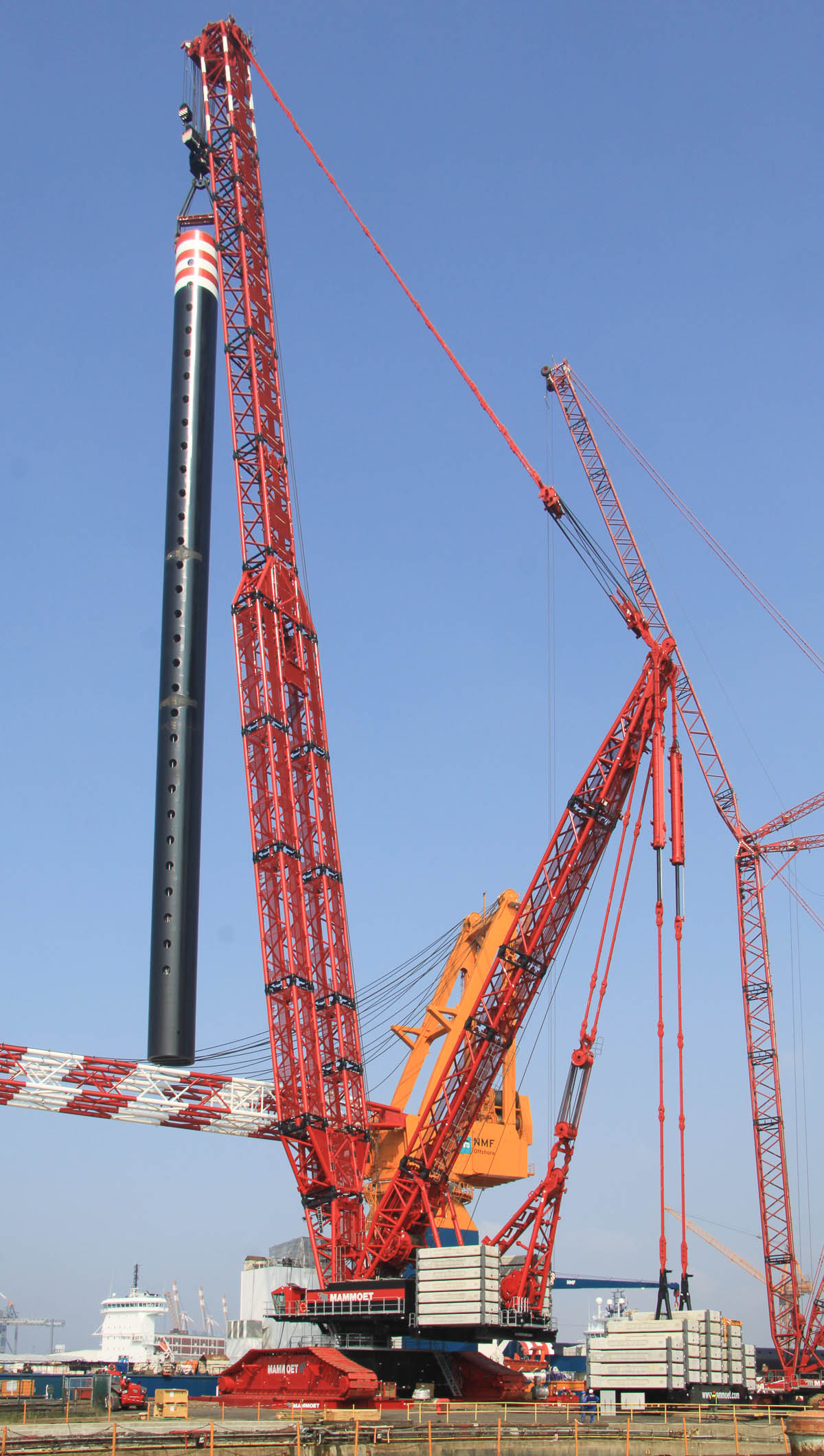
The assist crane during the job and assembly is a Terex CC 2400-1, a 400 tonne crane. The first leg will be mounted trough the crane house, this was the most challenging leg to lift. Here are hanging around 1,000 tonnes in the crane!
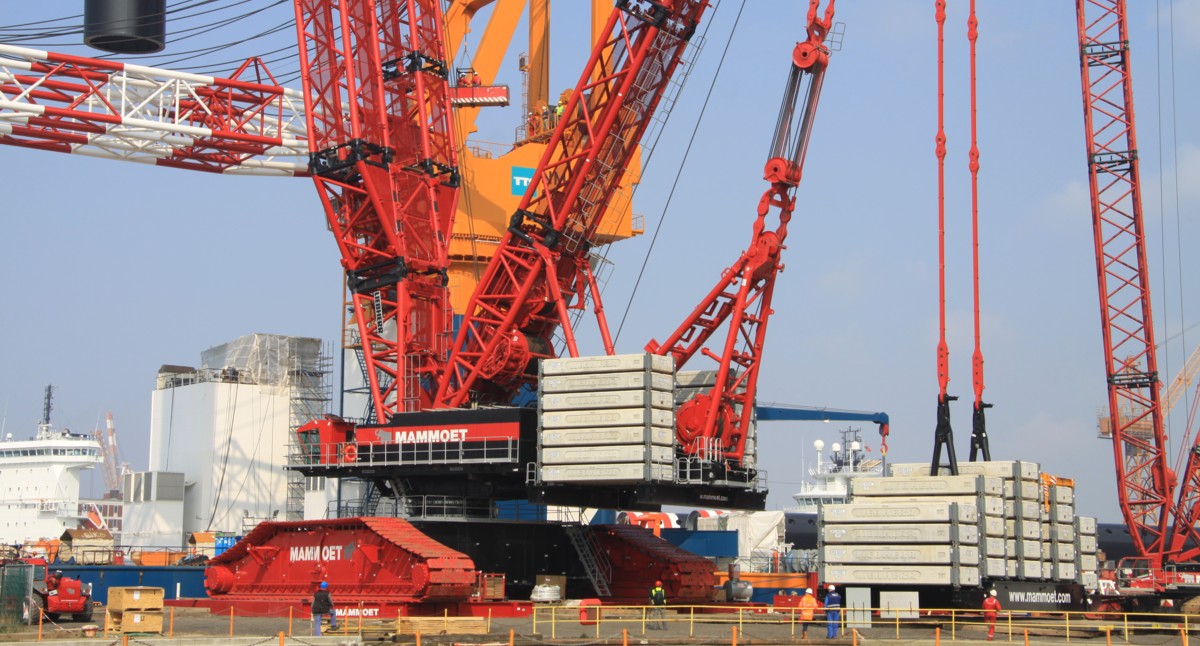
Over 600 tonnes of derrick counterweight on the derrick boom. The counterradius is max. 33,4 meters.
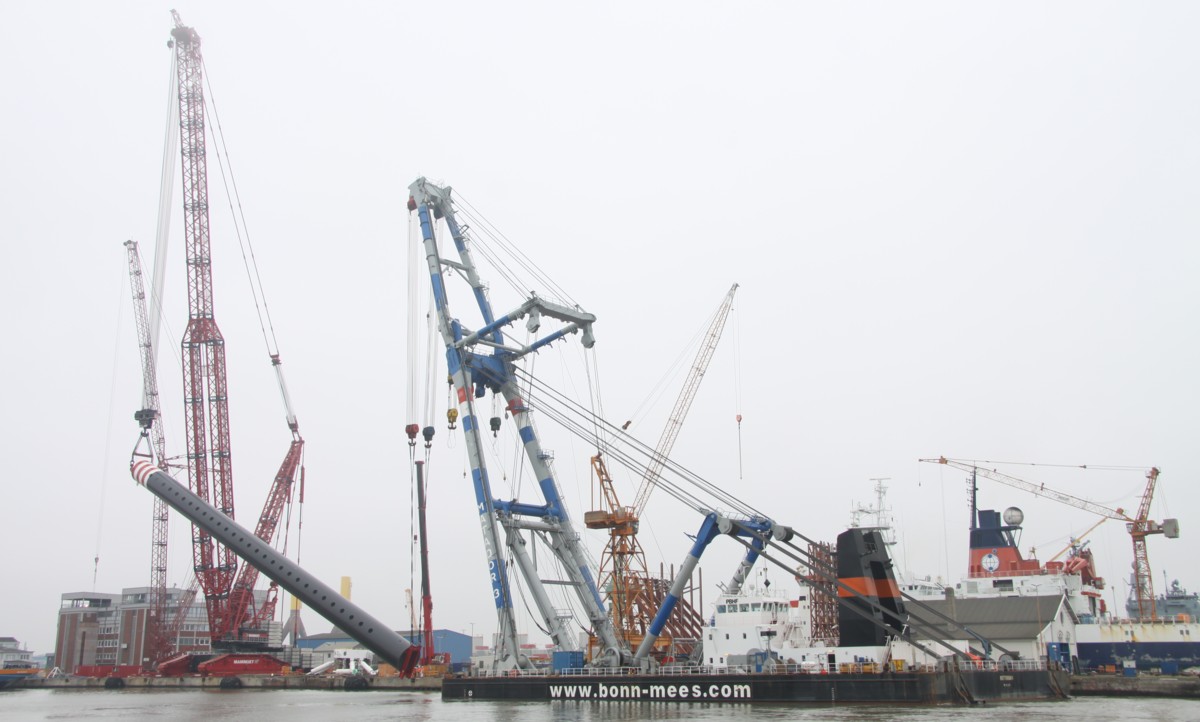
The next day for the second jack-up leg, again is the Matador 3 on the job site.
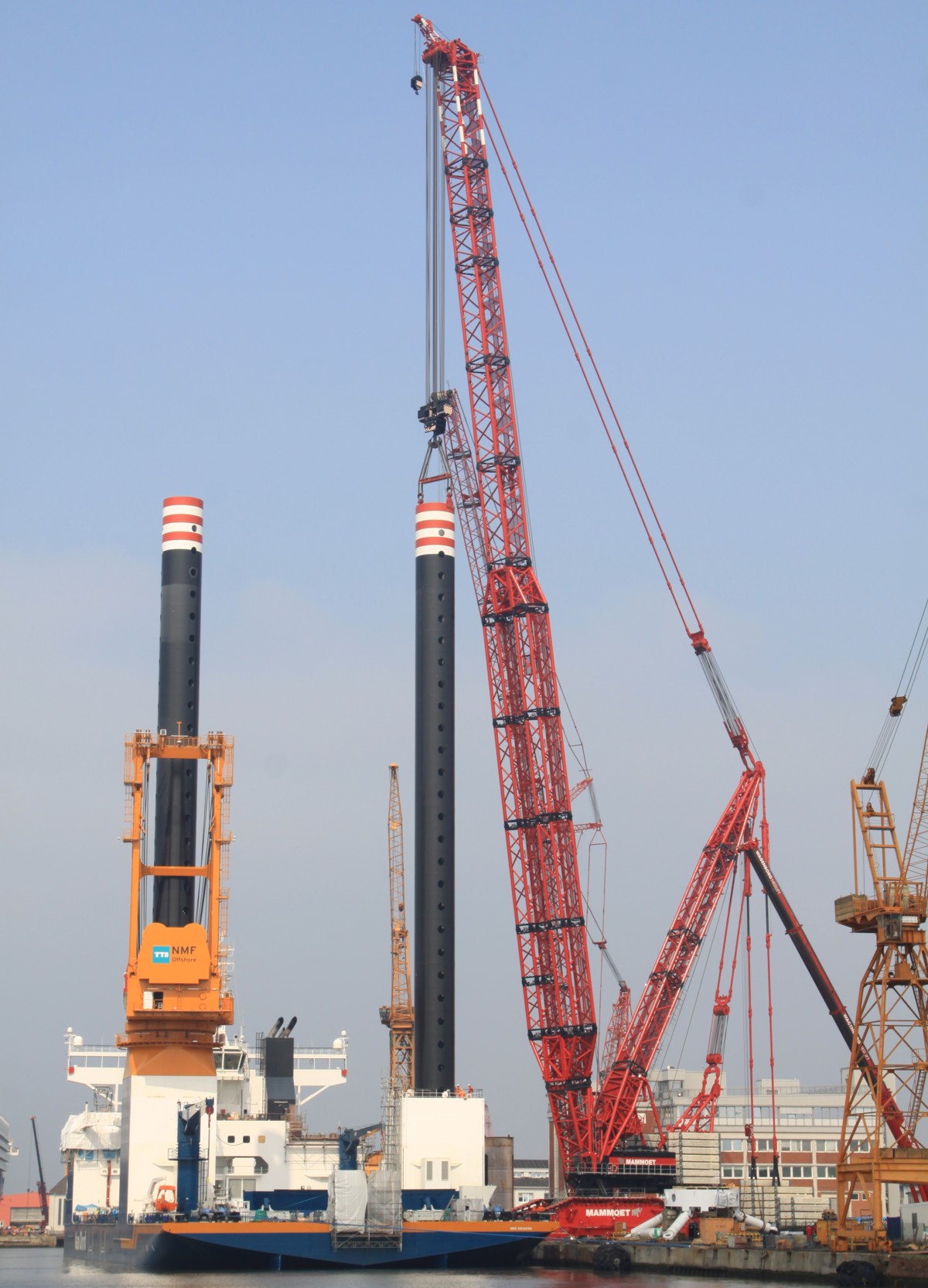
This leg will be mounted on the other side of the vessel. Removing the connection between the fastening equipment and jack-up leg is done with a remote control. In the next days the other legs will be mounted succesfully.